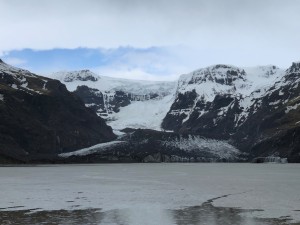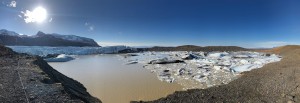In our recent trip to south Iceland, our group was given the opportunity to explore some of the incredible natural features found throughout the landscape of Iceland. These magnificent natural features included numerous waterfalls, huge glaciers, immense outwash fields, and Icelandic birch forests. This trip was able to teach us so much because it allowed us to take much of the theoretical information we were learning in class and give it a practical and experiential basis. Spending time in the field like this is an incredibly important part of environmental education because the issues we are studying are more than simply theoretical, they apply directly to the world around us. Therefore, one of the most beneficial things you can do it go into the field to experience them yourself. For example, on this trip to Skaftafell National Park we went on a 15-mile hike that led us through a glacial outwash field, to a glacial lagoon and glacier. This was the first time I had ever seen a glacier with my own eyes and I was completely awestruck. We had been learning in class about the differences in classification between glaciers, ice caps and ice sheets, but numbers and statistics alone cannot impact you in the same way that hearing a massive glacier inch forward with a rumble that echoes through the valley like thunder. On this trip I made a realization that I found incredibly important. With each glacier we visited, we heard stories from our professor, in just the time he had been visiting this glacier, how much it has receded and deflated. Understanding the extent to and speed at which these glaciers are receding is incredible frightening. It’s hard to comprehend how these natural features, so massive that they have the ability to shape and carve mountains, are being diminished at such an alarming rate. Experiencing these features myself has inspired me like nothing else, I now understand that these glaciers are a physical representation of the ways in which our anthropogenic release of CO2 is directly effecting the environment negatively. Often, the environmental effects of our actions are not observable, but standing before a glacier forces you to see just how detrimental our actions have been to the vulnerable environments that surround us.
Bradley Sachs


